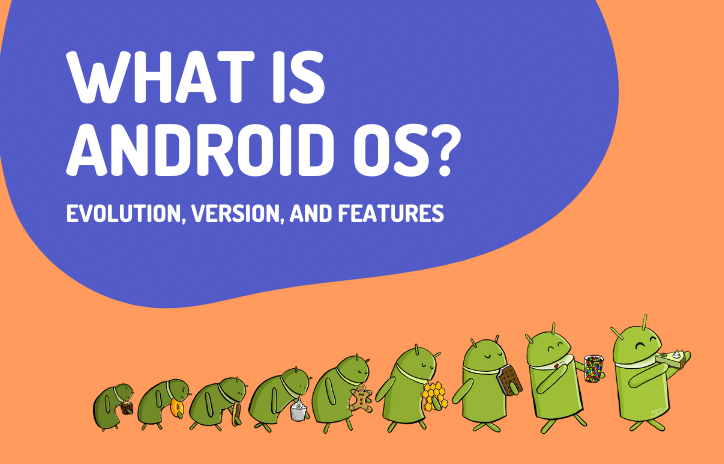Android OS is an open-source and freely available operating system. It is based on Linux Kernel, and It is designed for touchscreen devices like – Smartphones and Tablets.
It is developed by Open Handset Alliance (OHA) led by Google. OHA is a combination of 84 companies such as Google, Samsung, KDDI, Teleca, Intel, HTC, Dell, Motorola, Qualcomm, etc.
History
Initially, Android Incorporation was founded by Andy Rubin, Rich Miner, Nick Sears, and Chris White in Palo Alto, California, in October 2003. Google acquired Android Inc. in July 2005, for at least $50 million. After that, many versions are released in the market like – Cupcake, Donut, Eclair, Froyo, Gingerbread, Honeycomb, Ice Cream Sandwich, KitKat, Jelly Bean, Lollipop, Marshmallow, Nougat, Oreo, Pie. The current version is Android 11, which is introduced on 8 September 2020. Its API level is 30. The most recent was named as Android Q before Android 11.
You Must Know!
We don’t need to take a new mobile phone for the latest Android OS versions. It can be installed on our current mobile phones freely with Android Update, and Java is the official language for developing the App. In May 2017, Google announced support for app development in Kotlin language. Kotlin is used alternative language to Java, which is a cross-platform programming language. We can develop C and C++ App using the Android Native Development Kit (NDK).
Software Development Kit helps developers to create applications for the Android platform. Its applications are written in Java and runs on Dalvik virtual machine, which runs on Linux Kernel. Its virtual device is a configuration that defines the characteristics of android phones, Wear OS, Automotive OS devices, Tablets, Android TV, etc.
To test your android application on a computer or laptop, an Emulator is used.
Features of Android:
1. Automation: Tasker App lets you not only control app permissions but also automate them.
2. Near Field Communication (NFC): It allows electronic devices to interact across short distances easily; most Android devices support NFC.
3. Alternate Keyboards: It supports multiple keyboards and makes them easy to install; Swiftkey, Skype, and eight pen apps offer a way to change your keyboard style quickly.
4. Wireless App Download: To access apps on your mobile devices can be frustrating, but iOS makes it a little more difficult to download apps on your computer. It won’t sync your device until you plugin and access iTunes.
Using the Android market or third-party options like AppBrain, meanwhile, you can download on your PC and then automatically sync them to your Android. No plugging requires.
5. Storage and Battery Swap: Android phones also have unique hardware capabilities. Google OS makes it possible to remove and upgrade your battery or replace that no longer holds a charge.
6. Beautiful UI: Its OS primary screen provides a beautiful and intuitive user interface.
7. Connectivity: Bluetooth, Wi-Fi, LTE, GSM/EDGE, IDEN, CDMA, EV-DO, UMTS, NFC, And WiMAX.
8. Storage: For data storage purposes, uses SQLite, a lightweight relational database.
9. Multi-touch: It has native support for multi-touch, which was initially made available in handsets such as HTC Hero.
10. Multi-tasking: Users can jump from one task to another and same time various applications can run simultaneously.
11. Multi-Language: It can support the single and multi-directional text.
12. Wi-Fi Direct: Atechnology that lets App discover and pair directly over high bandwidth peer-to-peer connection.
13. Categories of Android Application: Music, News, Multimedia, Sports, Lifestyle, Food & Drink, Travel, Weather, Books, Business, Reference, Navigation, Social media, Utilities, Finance, etc.
What are the Benefits of Android?
- Third-party apps supported
- Notifications are nicely displayed
- Sharing of internet among devices
- Expandable memory
- multiple widgets on the screen
- Addition and removal of unwanted features
- It is an Open Source
- Cloud storage
- Restoring and backup of apps
- The App developers have high job demands




